Understanding the Rhythm of the Land Before You Walk Upon It: A Traveler’s Companion to Yasin Valley
This guidebook, which takes the shape of an extended reflective essay, serves as a bridge rather than a manual of instructions. It aims to introduce Yasin Valley through its spirit, history, culture, and ecological pulse rather than a list of attractions and regulations. The goal is to welcome a visitor into this valley as a guest, so that every action-whether taking a picture, walking a trail, or sharing a meal- becomes an instinctive act of respect rather than a grudging follow of the rules. Yasin is more than just a place to visit. It is an ongoing dialogue between people and the environment, between the past and the present, and between tradition and change
Bilal Akram Virk
10/26/202516 min read
An Invitation to Connection
It takes more than just traversing Yasin's villages and pastures to make a meaningful journey through it. It involves understanding the rhythm of its people, appreciating the value of their customs, and honoring the environment that supports them. Yasin has always been linked, despite being frequently characterized as isolated and unreachable in colonial documents. This valley was once part of the larger networks of trade that connected the Indian subcontinent, Central Asia, and the Pamirs—most notably the Silk Route—as evidenced by archaeological findings, historic caravan paths, and oral traditions (York, 2023).
In Yasin, however, the relationship is not merely historical but also intensely personal. "How many goats does your father own?" (York,2023). Susan York,an anthropologist, was asked when she arrived in Barkulti in 1982 for her research. She was shocked by the question, but it also exposed the way the villagers saw the world: their relationship to the land and animals was a key indicator of their status and standard of living. During my stay in Yasin, I met Mr. Amjad, who is an agriculturist by profession with a passion for history and culture. He explained historical records as well as living practices that confirm Yasin’s deep identity as a pastoral society. According to him, the ownership ofherds was communal and access to grazing pastures were not just economic practices but a defining characteristic of ancient life, shaping how progress was understood for centuries.
Amjad, Basharat, and Nizari were amongst the many locals I had the pleasure of conversing with during my own visit to Yasin. "Our grandfathers measured wealth in goats and grain, and in many ways, we still do," Basharat told me, illustrating the persistence of older systems despite the growth of agriculture and tourism. "Because they linked survival to collective responsibility", Nizari continued, "customary laws about pastures and irrigation channels were among the best markers of this continuity". In light of this, Amjad underlined that even though the contemporary economy is changing, "the memory of our ancestors is alive in the way we still respect the land." Their accounts reflect that wealth and identity have always been rooted in daily, tangible connections with fields, homes, and flocks, rather than in abstract measures of progress.
Stepping into this intimacy is what it means to be a visitor to Yasin. Warm Bratt and salted tea are served when someone enters a home, but it's also expected that they carry themselves with awareness.
Pastoral meadows of Yasin Valley, with willow trees against the backdrop of the Hindu Kush mountains
The Spirit of Place – A Land Forged by Ice and Resilience
Yasin's geography is more than just its backdrop; it is what makes the valley unique. Yasin is tucked away in Gilgit-Baltistan's northern region, sandwiched between the Hindu Kush and Karakoram mountain ranges, which have some of the biggest glaciers outside of the Arctic and Antarctic. These glaciers are more than just ice rivers. By gradually sculpting valleys, nourishing streams, and determining the agricultural rhythms of life, they serve as timekeepers. Villages clung to the riverbanks, and irrigation channels redirected glacial melt into fields, making it a "mountain oasis" (York, 2023). Orchards, pastures, and survival would be impossible without this meticulous use of water. Yasin's inhabitants have long coexisted with ice, soil, and stone in a precarious equilibrium. Their resilience is not heroic in the abstract sense; it is deeply rooted in traditional wisdom, embodied in the way roofs are constructed to bear heavy snow, how fields are rotated to preserve fertility, and how herds are taken to high pastures in summer to rest the valley’s lower grounds. As Amjad mentioned, these practices are not just habits of survival but living evidence of a wisdom passed down through generations, where every adjustment to land and season reflects centuries of accumulated knowledge.
The glaciers have influenced the people's temperament in addition to the geography. According to an account from Mr. Dinar, a social worker and local community leader in Yasin, "The mountains do not bend for us. We get used to bending with them”. This resilience philosophy is evident everywhere: in communities that strike a balance between conserving their heritage and interacting with modernity, in architecture that updates traditional forms to meet modern demands, and in craft traditions that endure while embracing new influences. For instance, wooden beams carved with floral and geometric motifs still anchor many village homes, yet today they may sit alongside metal roofing or cement walls, showing discontinuity in design even as materials evolve. Similarly, women continue to spin wool into yarn on traditional drop spindles, but younger artisans sometimes dye the threads with factory-made colors to meet market demand, producing shawls and rugs that blend old techniques with new palettes.
Yasin is therefore not a relic of the past but a dynamic space where tradition and modernity constantly negotiate. To walk here is to observe a negotiation between the demands of nature and humankind, as well as between the pressures of modernity andtradition. The people of Yasin exhibit resilience in every decision they make because the land, which has been shaped by a blend of nature and humankind, demands it.
A river junction where the Yasin and Phander rivers meet, located at the entrance of Yasin
The Heart of the Valley – Culture as a Living Tapestry
Culture is the valley's soul, if the mountains define its body. Yasin's cultural life is not a staged display designed to entertain outsiders; it is aligned with a greater schema of nature -lived and sustained from within.
The celebrations performed at festivals, the crafts passed from one generation to another, and the rituals of daily life are not staged for visitors but have evolved over the years of interaction between humans and nature. What a traveller witnesses here is an intimate pattern of co-existence between nature and humankind.
Just like how the seasons change, the rhythm of life also alters. The festivals celebrated in Yasin hold deep cultural significance. In the first week of March, the valley ushers in the spring Bo celebrations, marking the start of the agricultural season. In Yasin, Bo was traditionally observed as a public ceremony, drawing men from each village to witness the festivities and polo matches. Spanning several days, the Yasin Bo signaled both the arrival of spring and the beginning of agricultural activities in the valley.
Before the onset of cold weather, the final polo match of the season would be played. Around the same time, households began preparing for Thémešiŋ, the festival celebrating the completion of the harvest and the end of the agricultural season. With the harvest nearing its end, families gathered extra brushwood for the large amounts of fuel needed to prepare food for the celebrations. Women were especially busy making walnut paste for ḍaŋ makúti (stiff makúti), a staple dish of the festivities.
The Thémešiŋ celebrations, celebrated around November, held over for two days, marked the close of the agricultural year after all major tasks had been completed. The exact dates were determined according to the progress of the work, with the local khalifa setting the official dates once the field crops had been processed.
Crafts in Yasin are not commodities but languages. A carved wooden beam in a house is not decoration but an inscription of family and community identity. A handwoven shawl carries within it the hours of labor, the knowledge of natural dyes, and the patterns that have stories within the Burushaki language spoken here. I saw how women spun wool into thread and transformed it into textiles that both clothed their families and expressed continuity. For me, buying a shawl or carved spoon should not be seen as acquiring a souvenir but as carrying home a piece of living tradition.
Yasin's cultural identity also places a high value on poetry and music. Folk songs performed in Burushaski and Khowar, frequently accompanied by the sitar or dadang, have a long history in the valley. These songs, which tell love stories, heroic tales, and esoteric rhythms, serve as both amusement and memory banks. Poetry, which is requently read aloud at community events, captures the people's tenacity and bond with the land. This experience offers outsiders a glimpse into a rich tradition of harmony which, though often dismissed as backward, encapsulates the most creative beauty of life -allowing them the rare privilege of witnessing that beauty in full bloom.
Another important component of the cultural tapestry is oral traditions and storytelling. As the valley's memory-keepers, elders tell stories about rulers like Gohar Aman, the travels of Silk Route traders, or myths about rivers and glaciers. These tales teach us about the complexities and tragedies of the past, revealing how they evolve into the present. Now, the valley may appear calm, but the stories still echo in its silent corners. By paying close attention, one can learn how Yasin perceives itself across generations and realize that knowledge is frequently passed down orally through stories and myths rather than through books.
Traditional attire and household artifacts on display at the Burusho Museum in Barkolti, Yasin, preserving the valley’s living heritage
Hospitality is equally essential. Bread, conversation, and salted tea are provided for guests and sometimes four times a day. However, hospitality is reciprocal. It carries with it the expectation of modesty and respect. One can become a part of Yasin's cultural fabric by sitting with a village elder, hearing ancestor stories, or learning about the history of a fort or pass. This hospitality is embodied in architecture itself. The ha, a house's main room, is used as a kitchen, gathering spot, and haven. Its central fire provides both physical warmth and a metaphorical heart.
Another significant way that the Yasin culture is expressed is through food. Simple yet filling, meals are based on what the land has to offer. The staples are barley and wheat, which are frequently made into flatbreads like Phitti, baked in glowing embers in a stove, and shared with others. The importance of herding to valley life is reflected in the daily companionship of dairy products like yogurt, butter, and cheese. Both at festivals and on family tables, traditional foods like hearty lentil soups, Mamtu (steamed dumplings brought by Central Asian ties), and chap shuro (a meat-filled bread sometimes referred to as the Nager pizza) can be found. Dao Dao soup is a personal favourite of mine. In addition to providing nourishment, meals serve as social gathering places where respect is inextricably linked to food sharing.
The cuisine of Yasin is rooted in a few specialities that are served at every celebration and get-together, according to the owner of the cafe "Sparrow Nest" situated in the middle of Yasin bazar, a must-visit place. The most popular of these include Harisa, a slow-cooked meat and grain dish saved for winter feasts; and Sharbat, a sweet beverage frequently flavored with regional herbs. These foods serve as cultural markers that bind people to their land and to each other, making them more than just recipes. Samples allow visitors to experience the valley's deeper rhythms of hospitality, history, and community in addition to its flavors.
Culture here is a living tapestry—woven of continuity, resilience, and openness. To participate in it is to recognize that one is not merely watching but being woven into the pattern, however briefly.
A Journey Through Time – History Underfoot
Every path in Yasin is layered with history. The valley has been a crossroads of empires, a stage for battles, and a witness to exchanges of faith and trade. Walking through Yasin is to walk through centuries.
For example, Darkot Pass has long served as a link between the Indus and the Oxus. According to Tang dynasty records analyzed by Aurel Stein, a Chinese army under General Kao Hsien-chih crossed Darkot Pass in 747 CE as part of imperial maneuvers (Stein, 1923). Similar paths were taken by traders, pilgrims, and explorers centuries later, who left behind petroglyphs and inscriptions that can still be seen today. Ancient stone carvings and Megalithic sites, which take us into the Bronze Age may still be visible to visitors who stop along the boulders of Manichi, Bijayot, and Siliharan village today. The most important query that comes to mind when one visits these graves is: who were the owners of the megalithic graves? Were they Dardic or Non-Dardic people? These thoughts serve as silent mysteries and reminders of how the valley has always been in communication with the outside world. The ruins of forts recall rulers like Gohar Aman, whose defiance against Dogra and Kashmiri invaders made him a legendary figure in the 19th century. His name still echoes in the oral histories of the valley, where elders recount his bravery not as distant history but as part of a living identity. Sitting with a storyteller in Barkolti or Thoi, you may still hear these tales narrated by firelight, blending fact and myth into one.Colonial encounters further complicated Yasin's story. As Russian and British interests navigated and mapped these mountains, the valley became entangled in the "Great Game." George Hayward, an explorer, was killed near Darkot Pass in 1870 under circumstances that remain debated. It stands as a sobering reminder of how this landscape was caught up in the ambitions and rivalries of foreign powers.
Other remnants of history are more subdued but no less potent: ruins of watchtowers that once protected villages, shrines honouring poets and saints, and paths that connect the past and present by bearing both motorcycle tracks and hoofprints.
These tales serve as a reminder that, despite its modest size, Yasin was never historically inconsequential. Engaging with this multi-layered history is what it means to cross meadows, enter a ruined fort, or ascend a mountain path. Stories are preserved in the stones beneath your feet, and the memory of past caravans, soldiers, and storytellers is preserved in the air itself. History is not limited to museums in Yasin. Those who walk attentively will be able to read it beneath their feet, where it is ingrained in the ground.
Ruins of Madhuri Fort surrounded by trees in Yasin Valley, with the Hindu Kush mountains in the background
The Sacred Balance – An Ecology of Interdependence
One naturally comes to Yasin's ecological principles after tracing its spirit, culture, and history. The inhabitants of Yasin have coexisted with their surroundings in a precarious equilibrium for centuries. While talking to Karim Nizari, an academic and traveler from Yasin, he said
“In our tradition, we do not build on riverbanks, and our yearly calendar aligns with the seasons. The old customary practices save us from interfering with nature.
Throughout my childhood, and even to this day, I have witnessed our elders maintain a unique relationship with the land. The stories about spirits and fairies hold us accountable for our actions and create boundaries with nature. Alas, the commodity-driven model of development is alarming and could prove disastrous for regions like ours.”
The traditional irrigation channels, or kul, that were excavated centuries ago to transport glacial meltwater to the fields are a prime illustration of this wisdom. Strict customary laws made sure that downstream households always received their share, and villagers never diverted more water than was necessary. Oral stories of spirits watching over the water furthered the belief that breaking these rules would bring bad luck. These meticulously balanced systems are now in danger of being upset by uncontrolled construction along riverbanks demonstrating how disregarding traditional boundaries can have negative ecological effects.
Modern tourism and climate change, however, have placed new pressures on this balance. The challenge is not only to protect landscapes but to honour the traditions that are inseparable from them. This is why ecological guidelines are not rules imposed from outside but the valley’s own principles, translated for visitors.
“There’s no system to manage the waste from poultry farms or toilets. When we were children, we drank directly from the irrigation channels because they were that clean. Now you’ll see the same water polluted with diapers.” ~ Murad
The principle of walking gently emerges from the fragility of alpine soils. A single careless footprint can take decades to heal, and paths are more than trails—they are arteries of survival. The principle of leaving no trace reflects the valley’s understanding that beauty must be preserved in its pristine form. To leave behind plastic or waste is to violate the generosity of the land. Theprinciple of honouring privacy recognizes that a photograph is not merely an image but an encounter, a moment of someone’s life that deserves respect.
This sacred balance includes wildlife as well. Recognizing that humans are not the masters here but rather stewards in a shared ecosystem can be achieved by silently observing without feeding or disturbing. Responsible spending that supports local communities promotes both cultural preservation and economic justice. Purchasing directly from a craftsman or lodging in a homestay run by the community guarantees that customs will continue to exist and that development will benefit those who are preserving the valley.
Another principle is to treat water like a sacred resource, which is exactly what it is in Yasin. In addition to being useful tools, irrigation channels are cultural assets that have been safeguarded for generations by customary law. It is disrespectful to the environment and centuries of careful stewardship to waste water, divert streams, or pollute them.
“Our waterways have a long history, protected by customary law. They worked for centuries because they were sustainable, but now they are being polluted and neglected.” ~ Basharat (a native of Yasin and professor of anthropology at Habib University Karachi)
Respecting sacred and historical sites is equally important. Fort ruins, shrines, and even old pathways are not abandoned relics but living reminders of the valley’s continuity. To climb on fragile ruins or carve one’s name into ancient stones is to erase history that has endured for centuries. Visiting such places should be done with quiet reverence, as though entering someone’s home.
Reducing noise and disturbance is also crucial. Drones, loud music, and irresponsible intrusions have no place in Yasin. Here, silence is not a sign of emptiness; rather, it is a characteristic of the valley. One way to honour place is to permit yourself to listen, whether it's to the distant crack of glaciers, the call to prayer that reverberates throughout a village, or the soft sound of irrigation water.
One must recognize that cultural customs are themselves part of the ecology of the valley. Dress codes, gender norms, and traditions around shared meals are not barriers but invitations to enter respectfully into a way of life. By adopting modest clothing, asking before joining a gathering, or learning a few words of Burushaski or Khowar, you signal that you wish not to impose but to participate with humility.
In one of my discussions with Shah Raheem (Youth representative ), he said, “The land is generous, but it is not endless. We borrow it from our children.” These principles are therefore not prohibitions but extensions of Yasin’s own worldview. By adopting them, a visitor does not follow foreign rules but steps into the valley’s ancient rhythm of respect and reciprocity.
Practical Companion – Seasons, Travel, and Planning
It is only natural to want to experience Yasin's story firsthand after becoming engrossed in it. The adventure includes the journey itself. Yasin is roughly 148 kilometers from Gilgit and can be reached by meandering roads that cross breathtaking mountain passes and follow rivers. The journey, albeit occasionally lengthy, serves as an introduction to the valley's splendor as the scenery changes from stony cliffs to lush fields.
The best time to visit depends on what you seek. Spring offers cherry blossoms and wildflowers, turning the valley into a living painting. Summer is ideal for trekking, fishing, and camping in alpine meadows. Autumn brings crisp air and golden fields, while winter cloaks the valley in snow, limiting access but revealing a stark, silent majesty. Each season is not only a backdrop but a participant in Yasin’s life, shaping festivals, diets, and daily rhythms.
Important sites include Barkolti Village, where hospitality is still legendary; the historic Darkot Pass, where every step evokes centuries of traders and armies; the meadows of Qorqolti, where camping under starry skies gives a sense of the valley's vastness; and Lakes, which freeze solid in the winter and gleam with glacial blues in the summer.
“In Yasin, most of the money is held by people sitting in Islamabad, Karachi, or abroad. So when outsiders invest in hotels and tourism here, of course, they profit—because we locals didn’t or couldn’t invest first.” ~Shah Rahim (A Youth Leader from Yasin)
During my trip to Yasin, I saw this firsthand: roads slicing through formerly pristine landscapes, hotels popping up next to delicate ecosystems, and concrete structures rising along the riverbanks. I had the chance to visit one resort in particular, which wasbeing built by someone from another province. It was located on the riverbed, and all the waste and pollutants from the resort were discharged directly into the freshwater. We should hold the government accountable for issuing NOCs for such unreasonable construction, and it should be banned. Despite being frequently presented as indicators of advancement, these changes run the risk of upending the very ecosystem that the valley's culture and survival rely on.
There are many activities: from trekking and fishing to simply sitting with locals over tea. Yet the essence of Yasin is not in ticking off places but in slowing down. The valley rewards patience and attentiveness. To rush is to miss the point; to linger is to understand.
Our Pledge
However, it takes more than the kindness of individual visitors to preserve these regions' fragile balance. Strengthening long-standing customs that have supported the valley for centuries, like group waste-sharing schemes and the traditional management of water channels, is the way forward for the local community. These systems are not out of date; rather, they embody an ecological wisdom that can be modified to meet contemporary issues.
It is the government's duty to invest in infrastructure that protects people and the environment rather than just token projects. Protective zoning to stop uncontrolled construction along rivers, forests, and delicate pastures, community-run waste collection, and renewable energy initiatives like micro-hydro power can all help guarantee that development does not come at the expense of the environment. A close collaboration with local stakeholders is necessary to ensure that prosperity stays anchored in the valley. Policies must also give priority to granting locals, not foreign investors, the first say in tourism-related benefits.
The responsibility for guests is significant. Educate yourself about the region and its people before visiting. Be humble when you travel, treat the land with kindness, and consider yourself a guest rather than a customer. Select homestays rather than big hotels, buy handicrafts straight from makers, reduce the amount of plastic you use, and respect local customs and privacy. When hundreds of travellers are involved, even seemingly insignificant actions, such as asking before taking pictures or bringing your own reusable bottle, take on significant meaning nTogether, these small but intentional actions create a common care ethic. They guarantee that Yasin's tale is one of resiliency rather than deterioration, enabling the valley to endure as a place of wonder for future generations as well as a home for its inhabitants.
A critical discussion with locals at Sparrow Nest Restaurant in Yasin, reflecting on the valley’s culture and contemporary challenges
1st row left to right: Zohaib khan, Anjum Hussain Nizari, Karim Shah Nizari, Basharat Issa, Javaid, Shah Rahim, Sohaib Wali, Ajmad Elia, Tehreem Mela and Zuafrah
2nd row left to right: Riaz Saqi, Bilal Virk and Asad Aziz
Bibliography
Aziz, Muhammad Abdul, et al. “Shared but Threatened: The Heritage of Wild Food Plant Gathering in Ishkoman and Yasin Valleys, North Pakistan.” Food 9, no. 5 (2020): 601.
Hussain, Shafqat. Remoteness and Modernity: Transformation and Continuity in Northern Pakistan. New Haven: Yale University Press, 2016.
Kreutzmann, Hermann. “Foreword: Yasin – People and Places in the Hindukush-Karakoram.” In Susan York, A Mountain Oasis: Daily Life in a Village in the Yasin Valley, Pakistan. Leiden: Brill, 2024.
Neelis, Jason. Early Buddhist Transmission and Trade Networks: Mobility and Exchange within and beyond the Northwestern Borderlands of South Asia. Leiden: Brill, 2011.
York, Susan. A Mountain Oasis: Daily Life in a Village in the Yasin Valley, Pakistan. Leiden: Brill, 2024.
Stein, Aurel. A Chinese Expedition Across the Pamirs and Hindukush, A.D. 747. Indian Antiquary 52 (1923): 1–10.
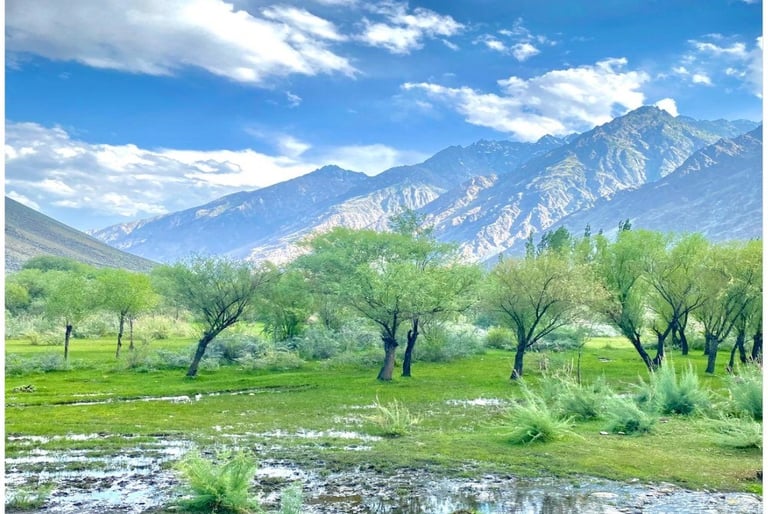


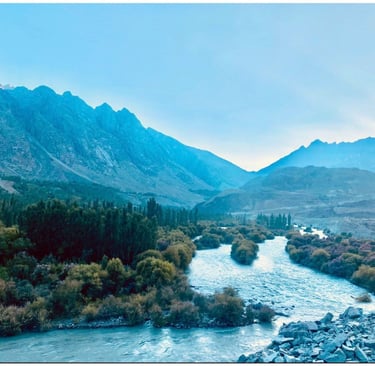
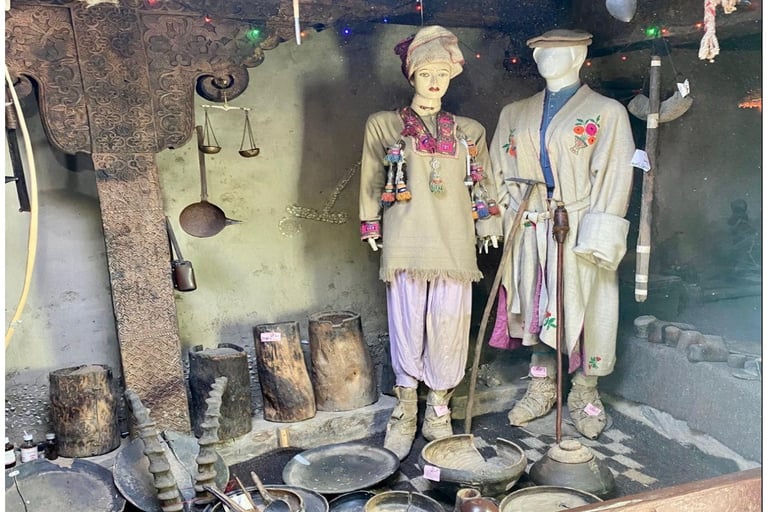


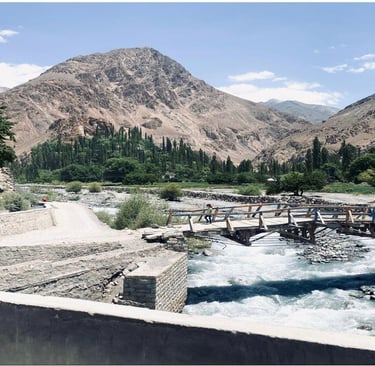
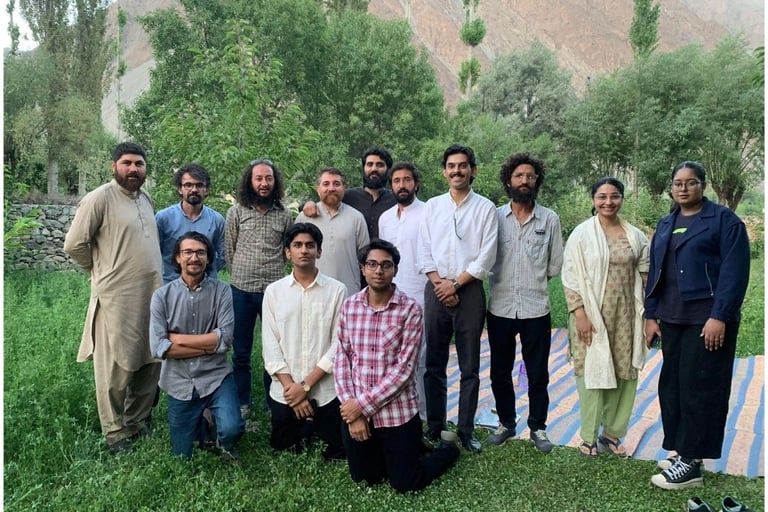

Explore
Discover the beauty and culture of Yasin Valley.
Nature
Culture
© 2025. All rights reserved.